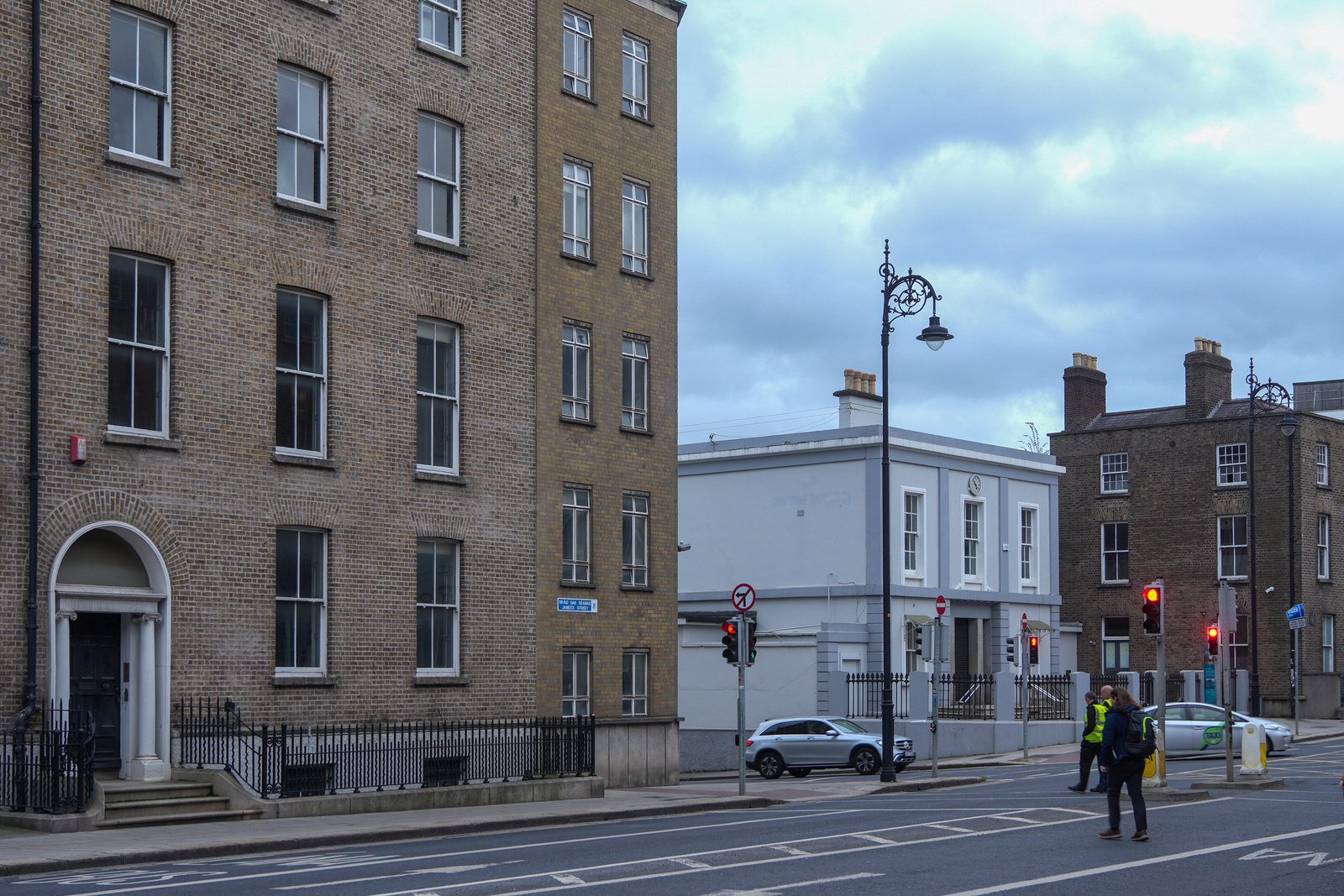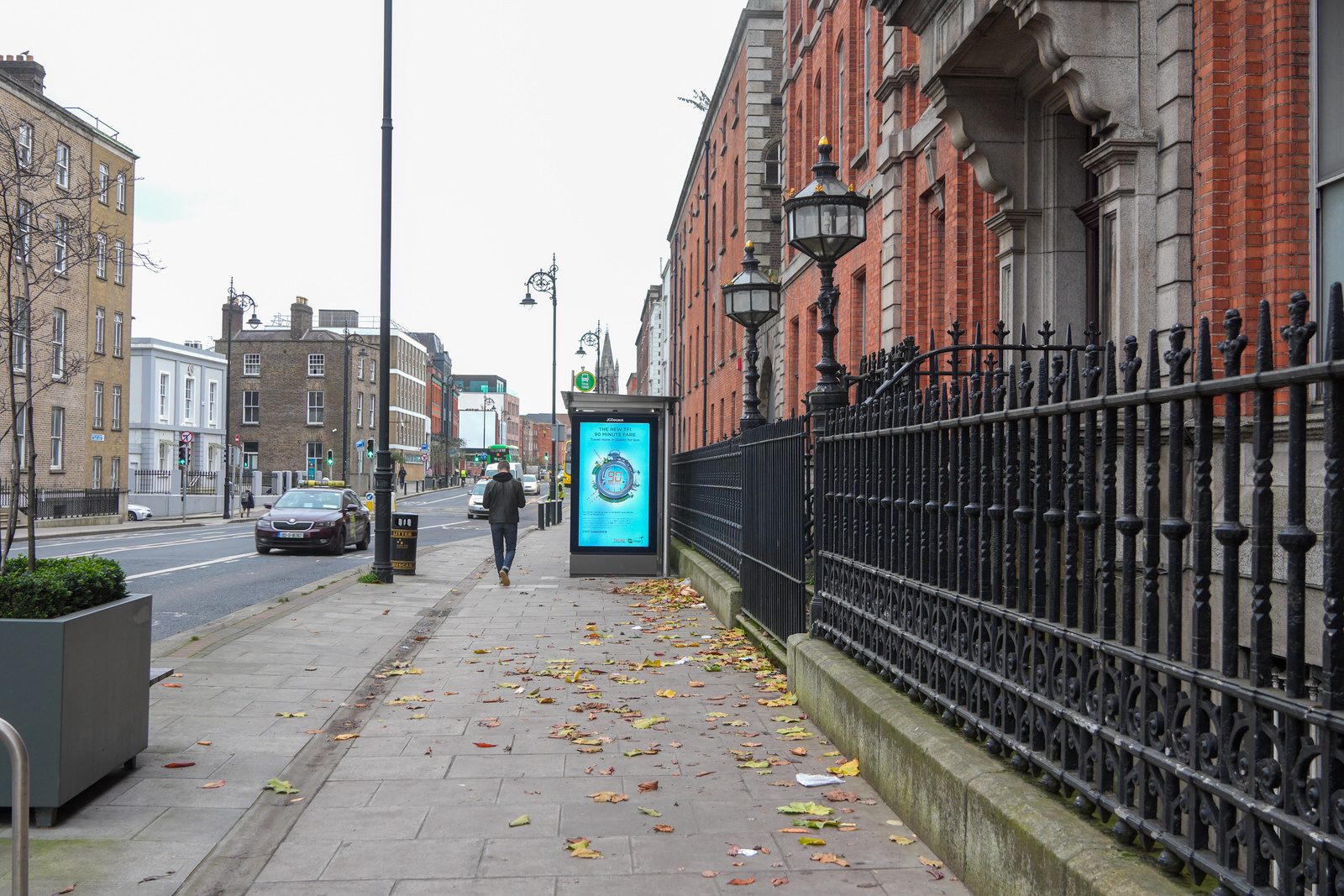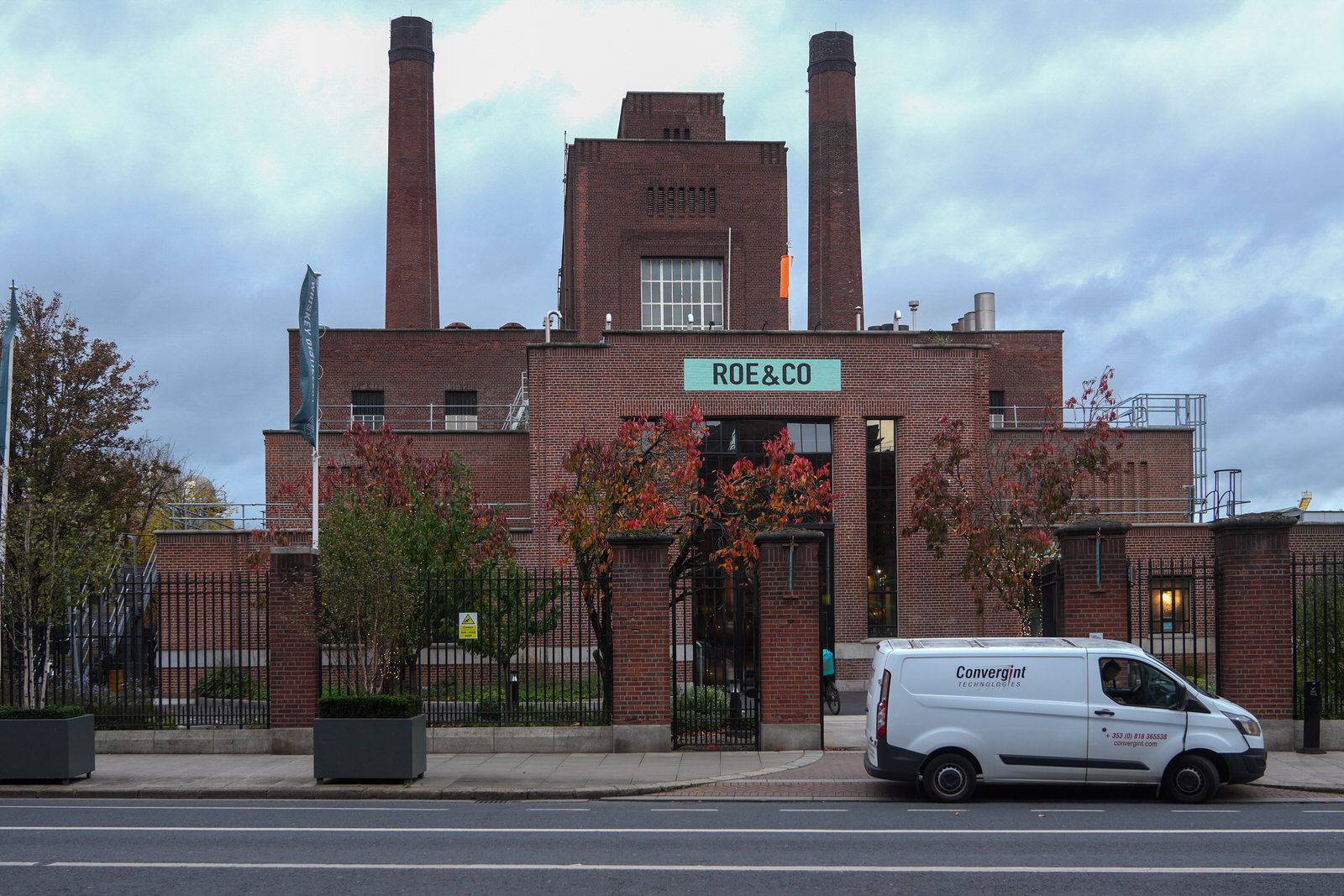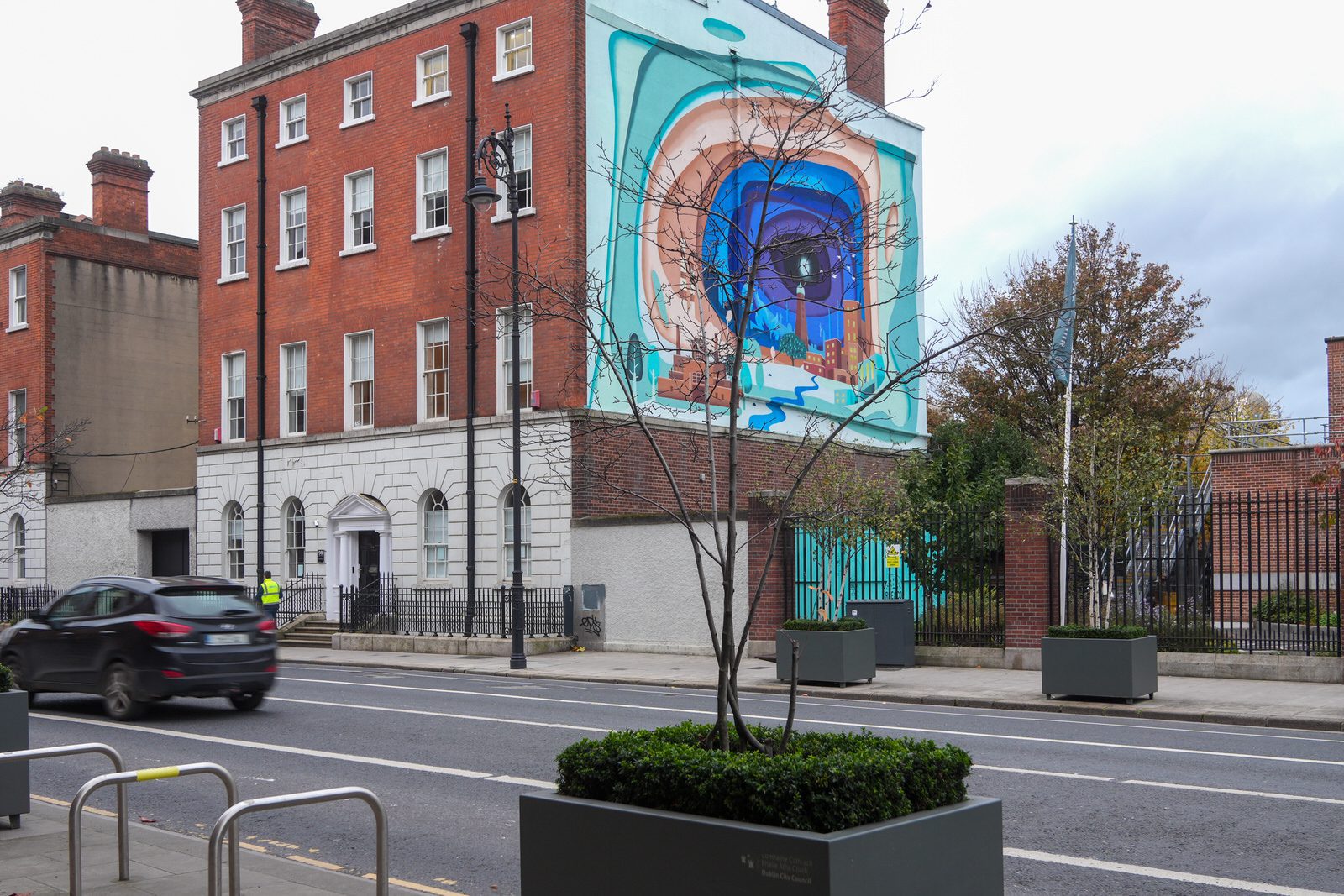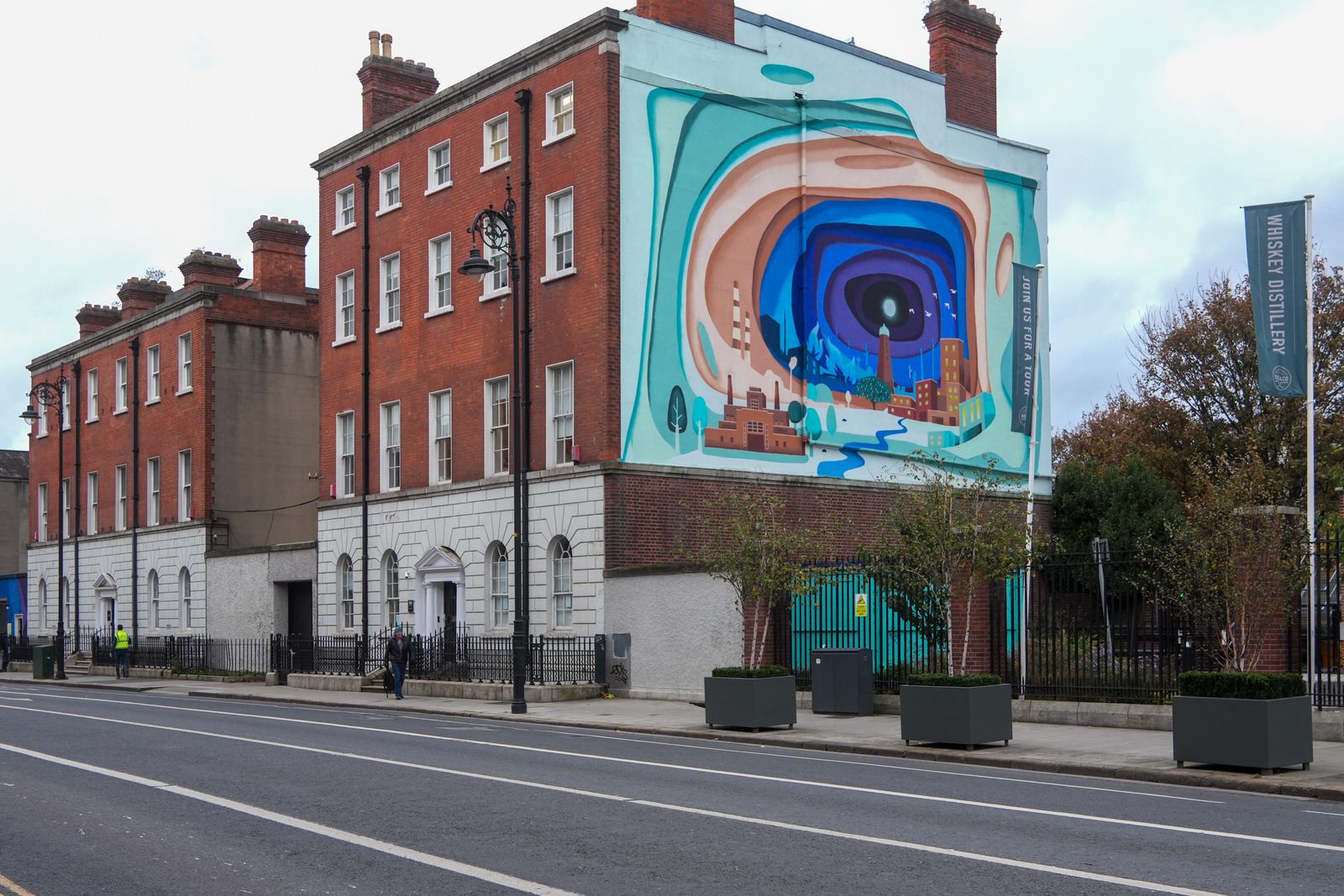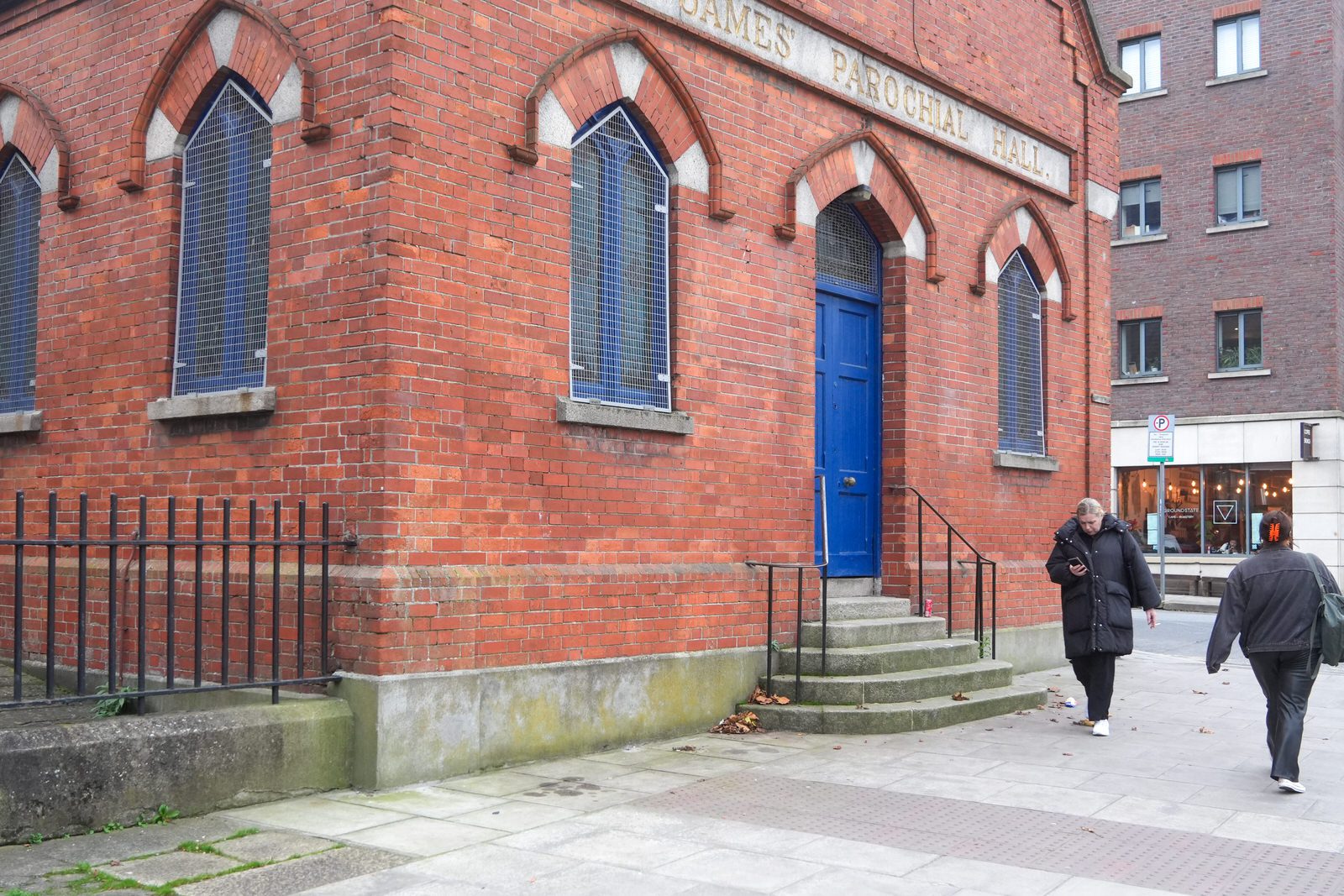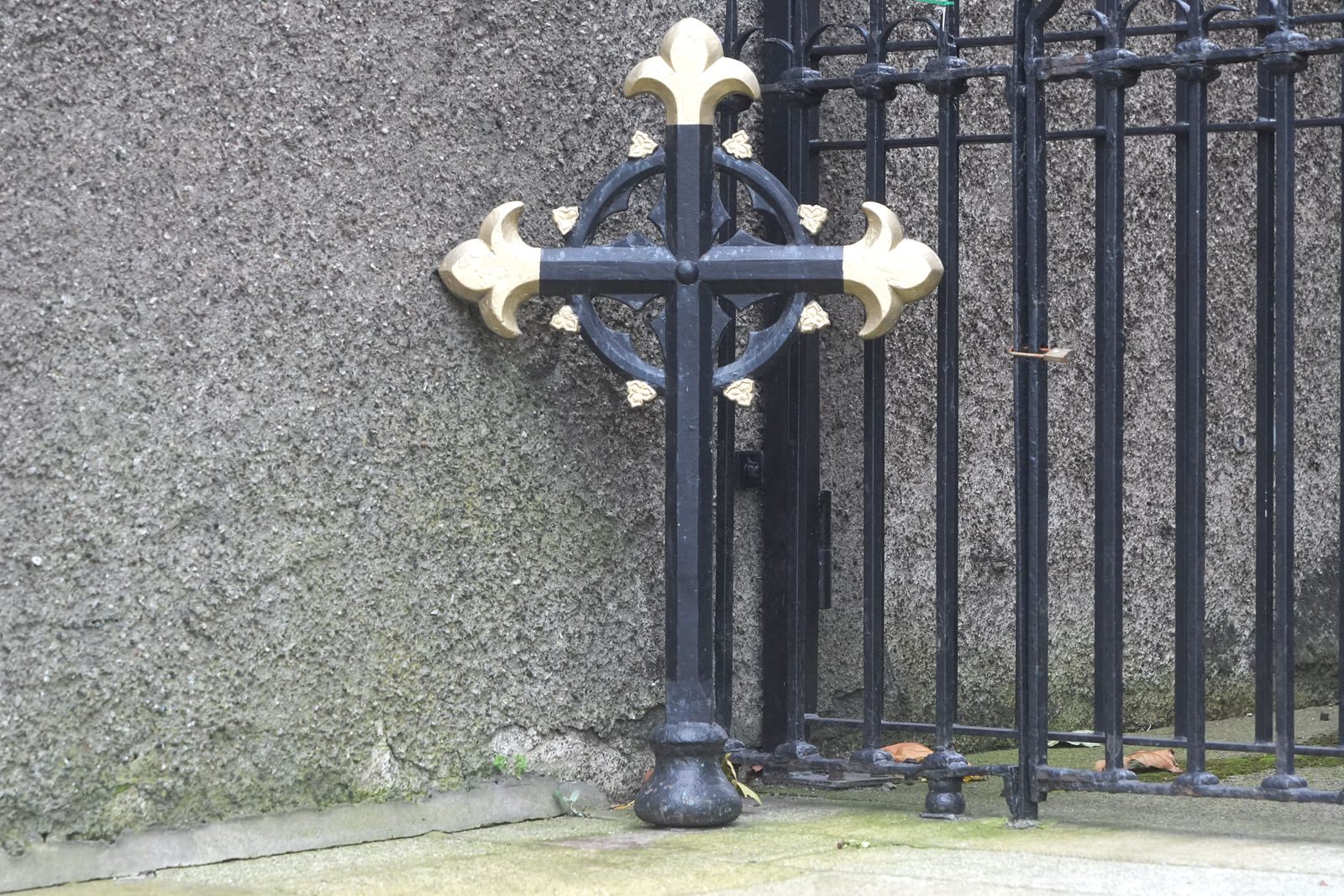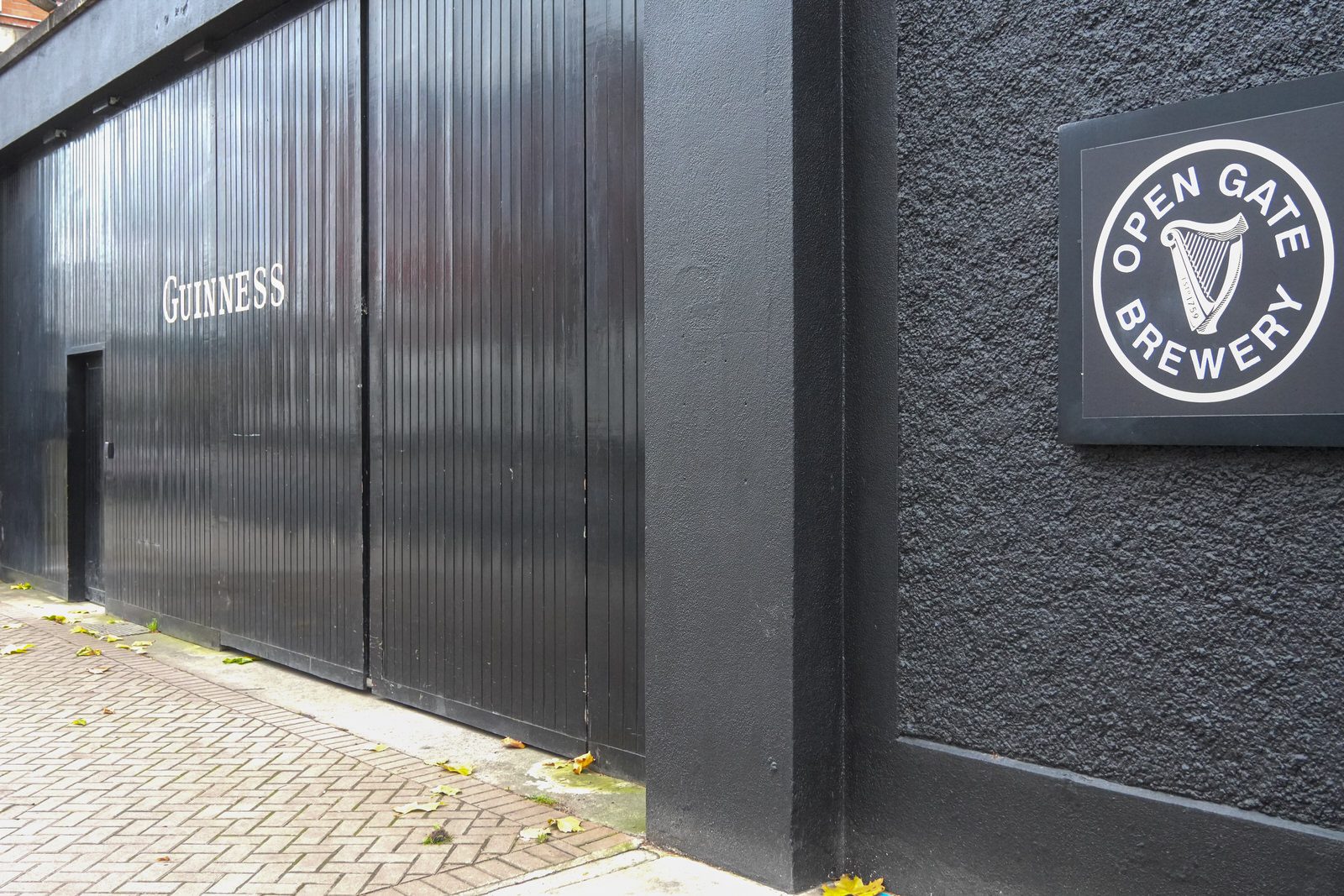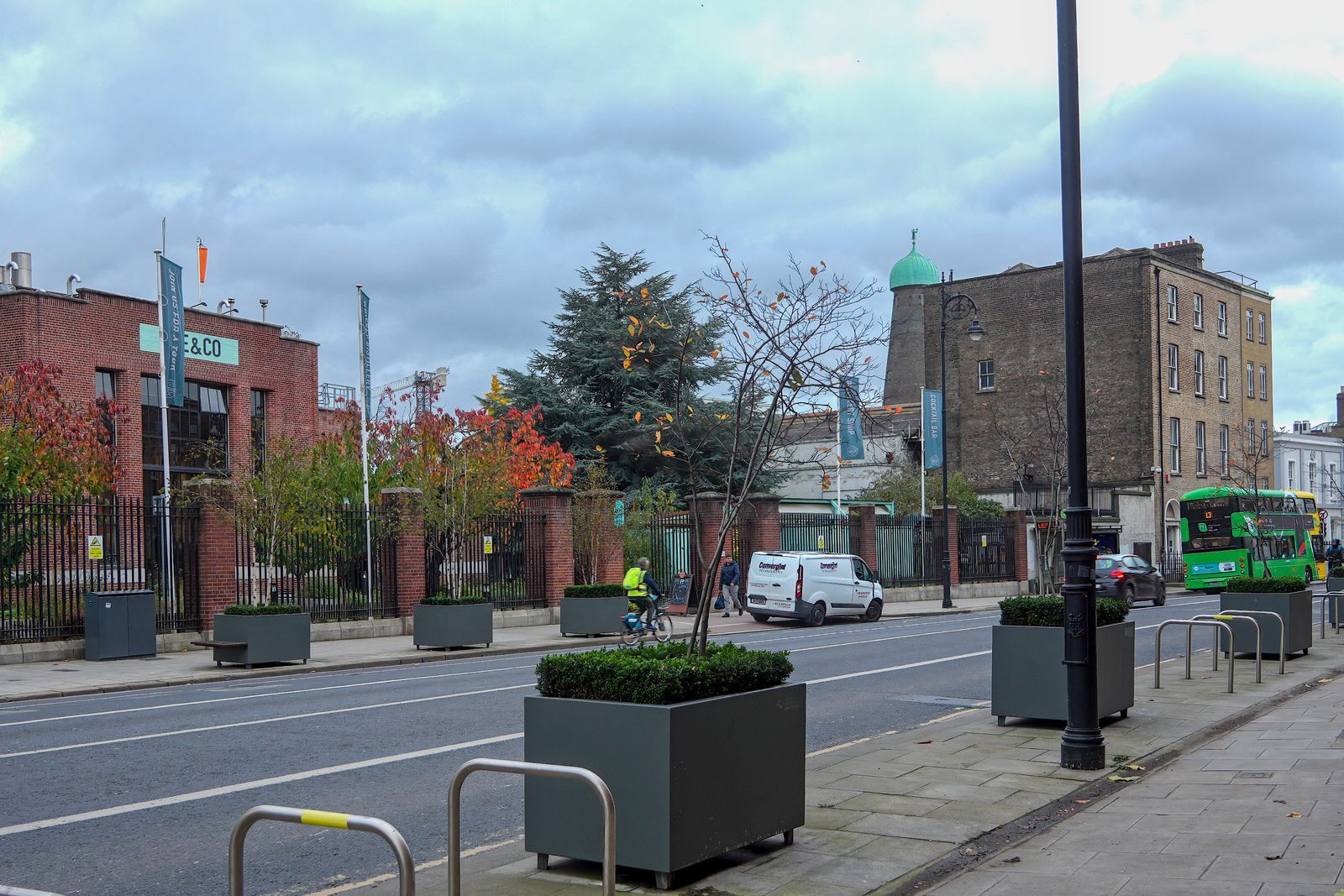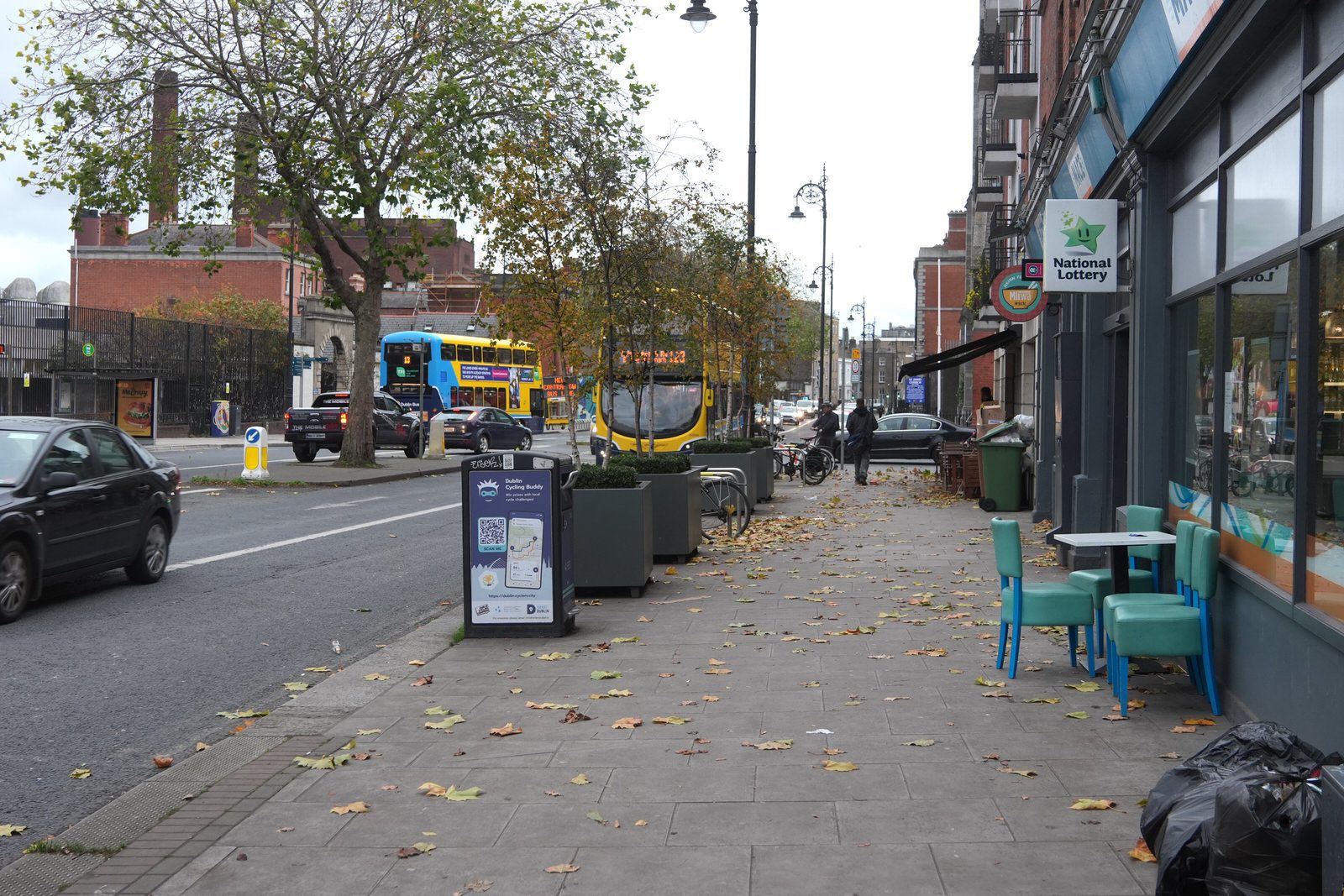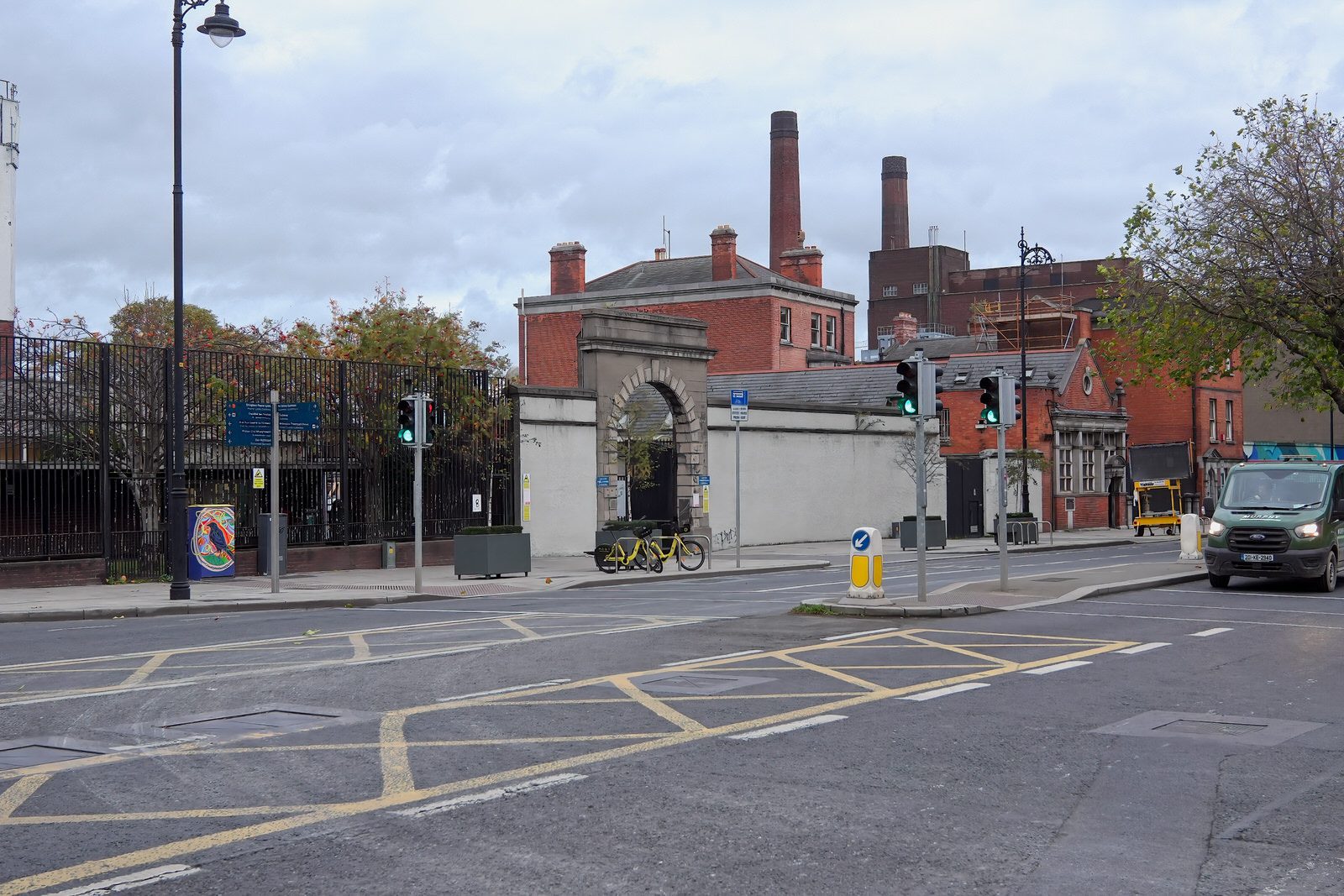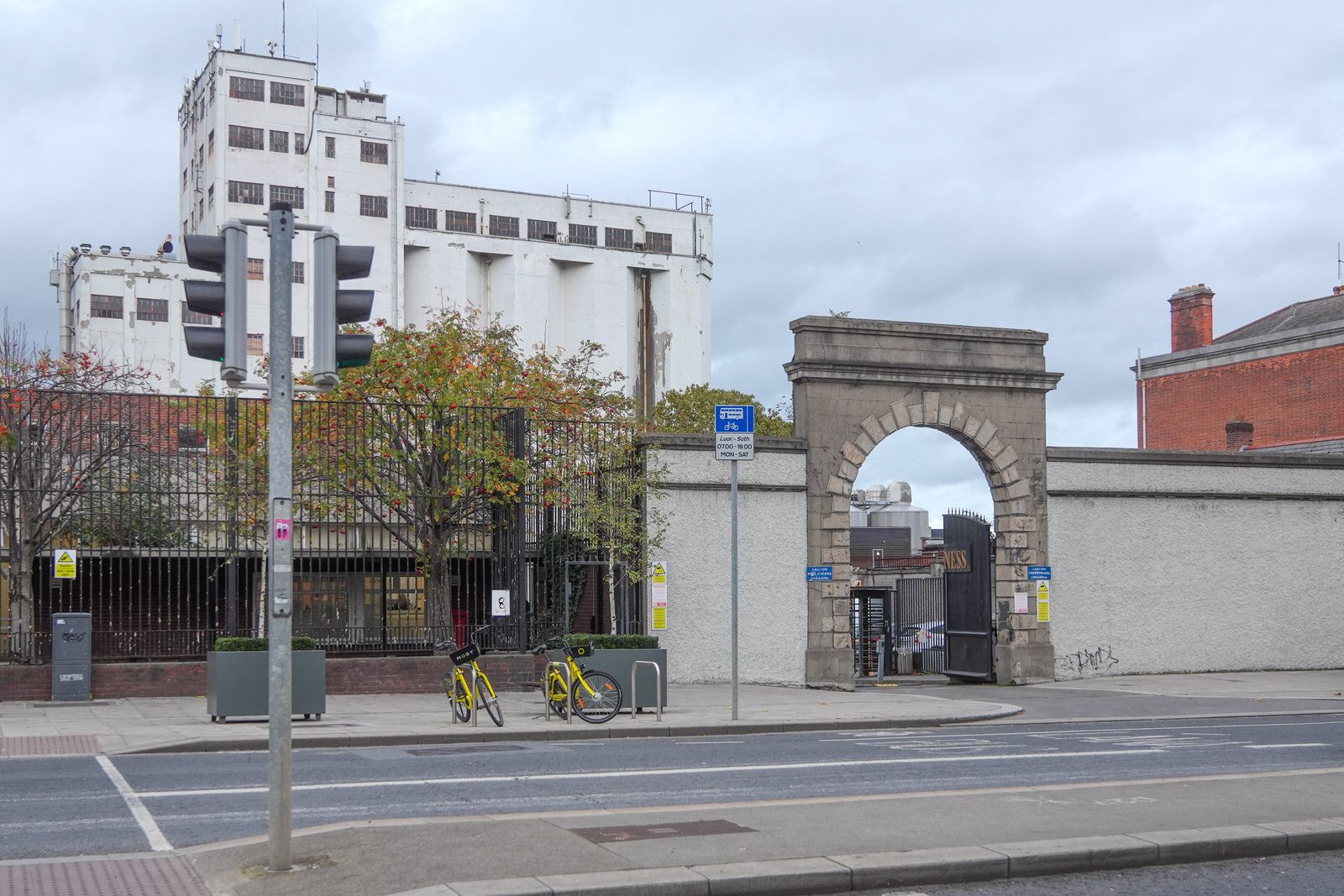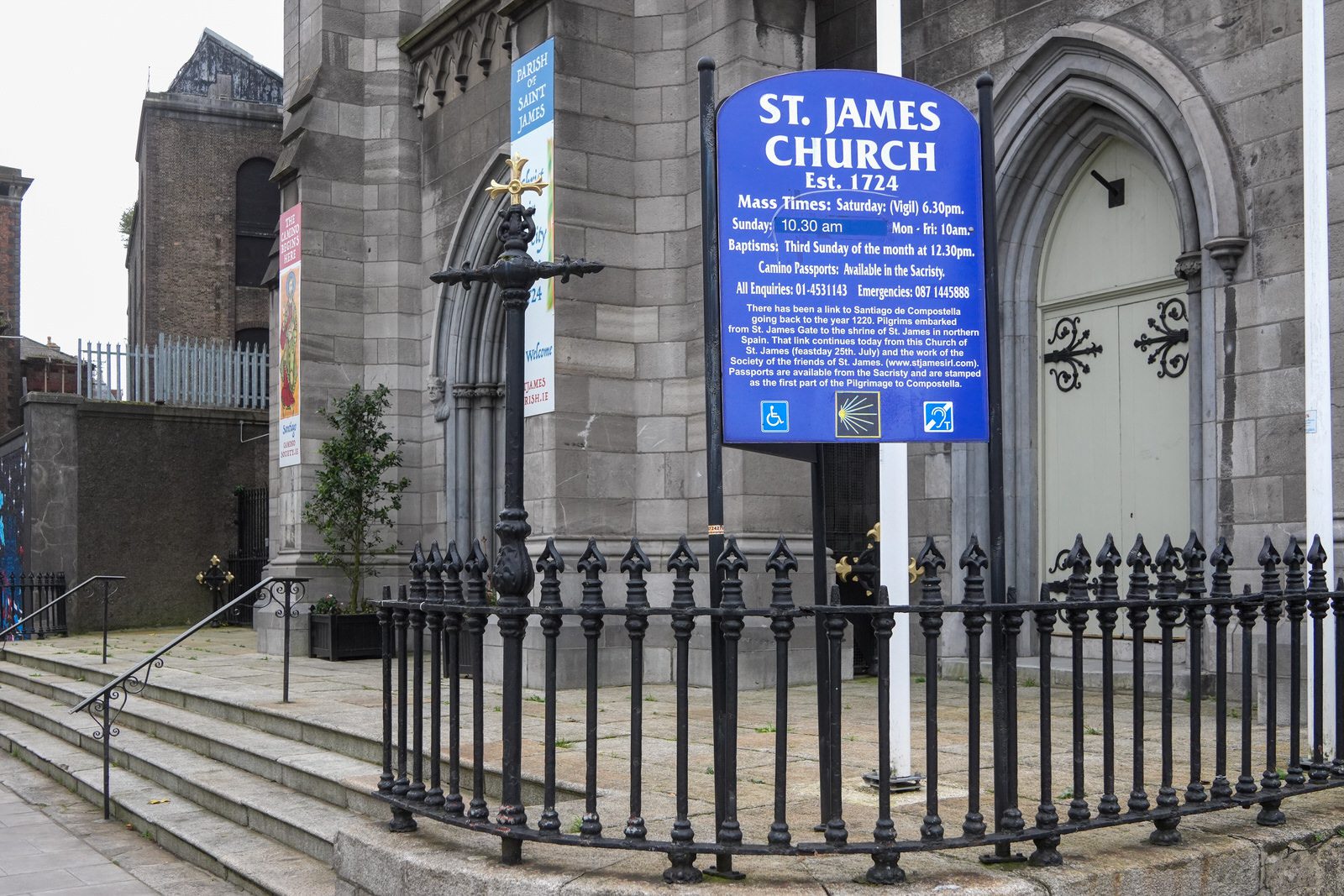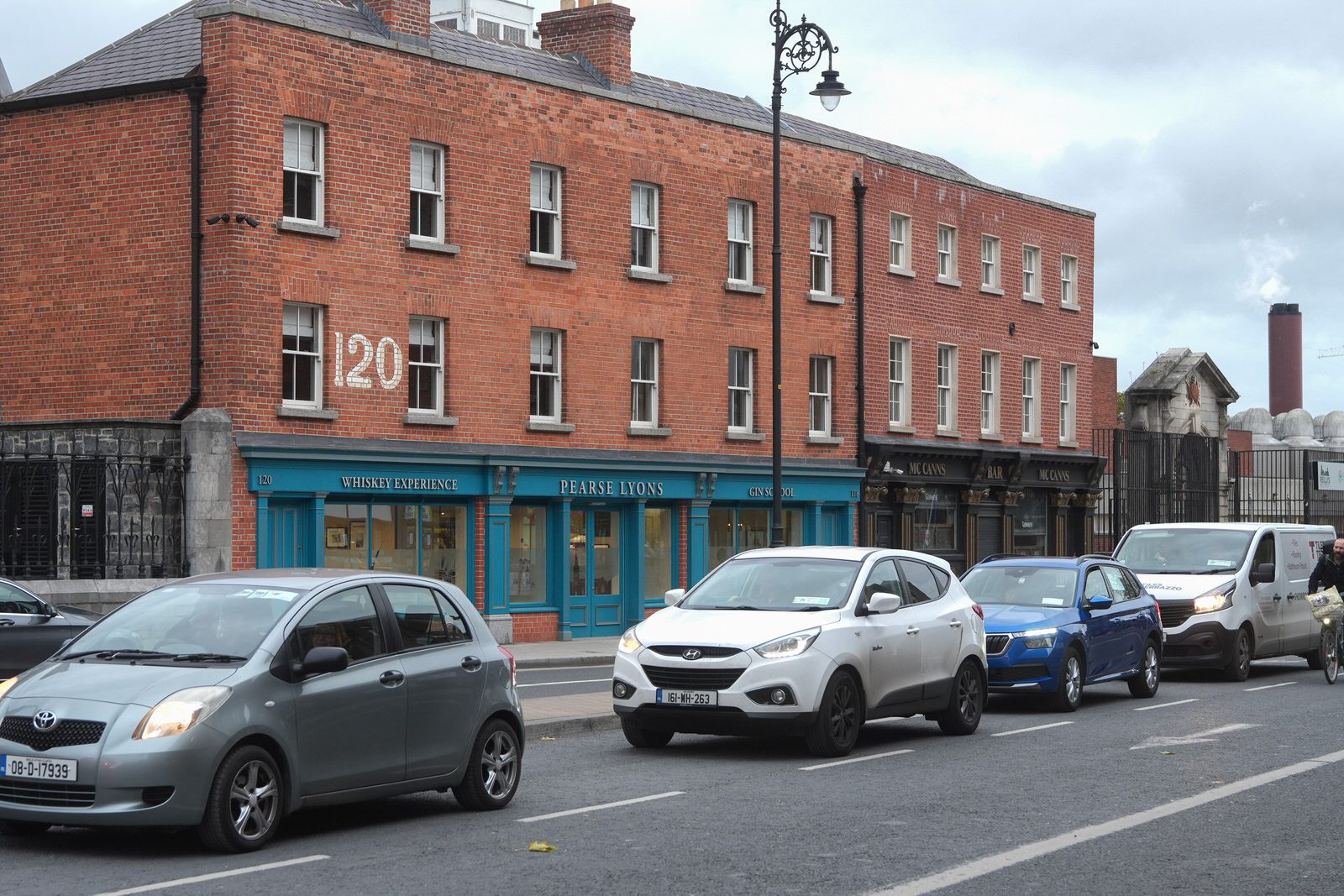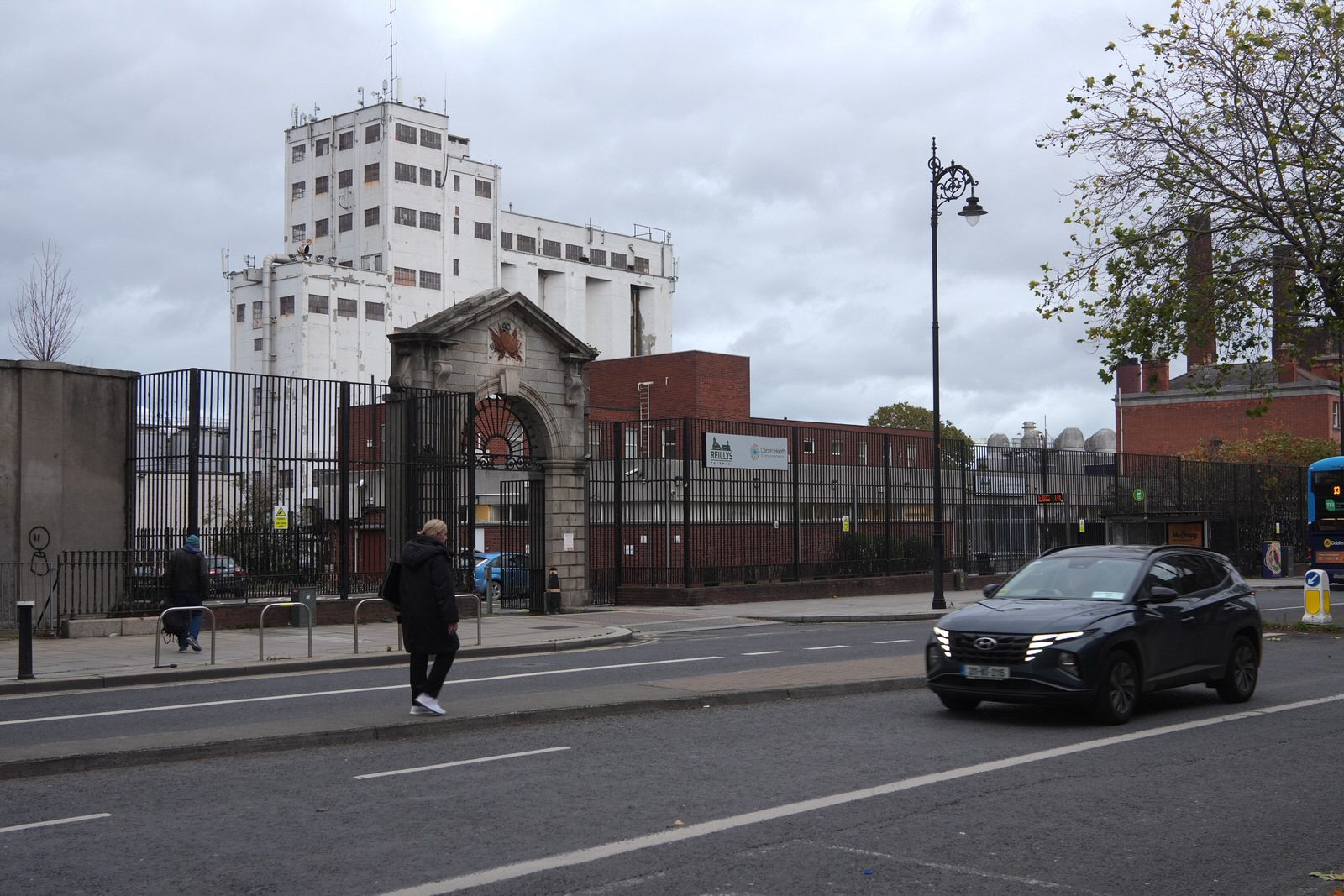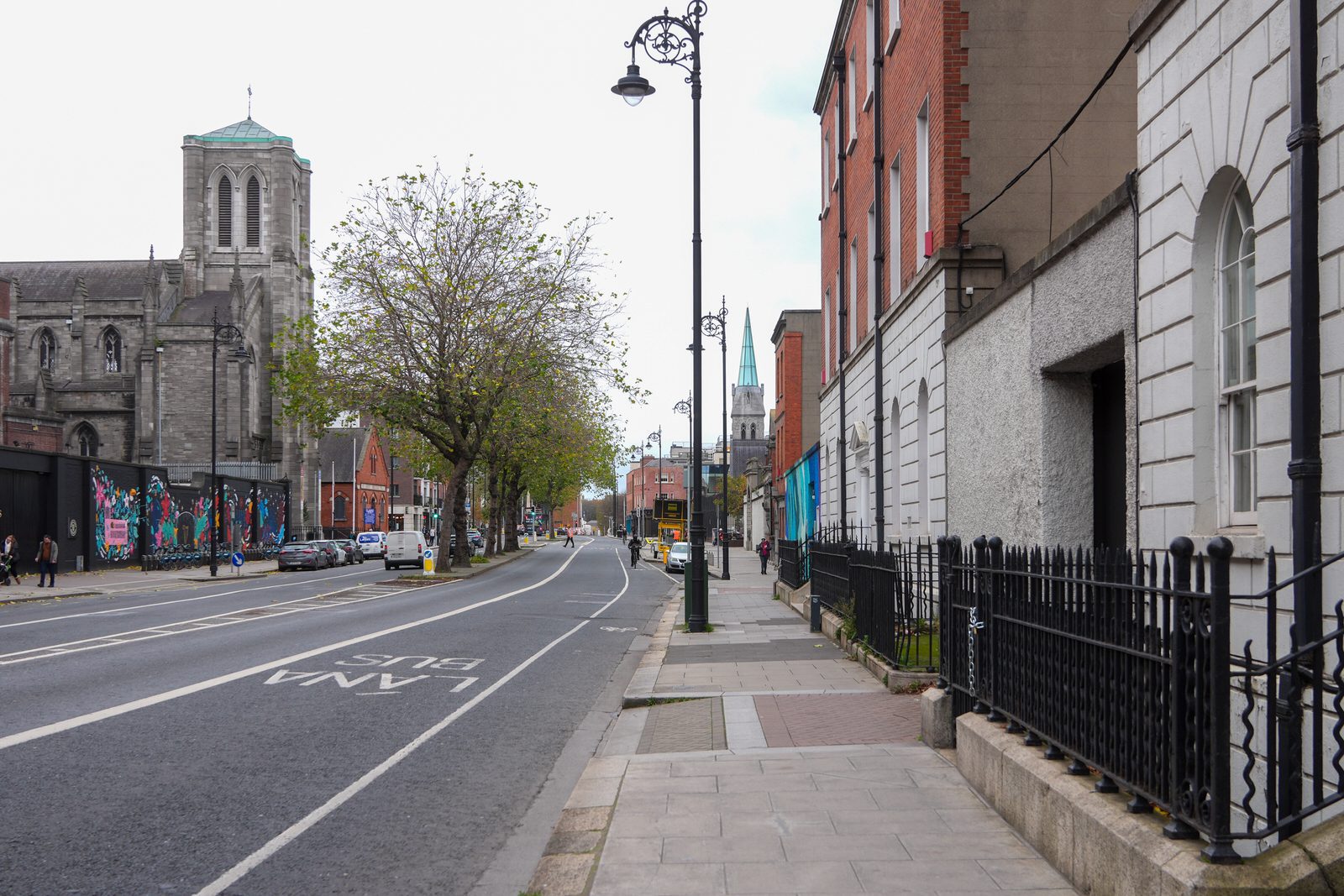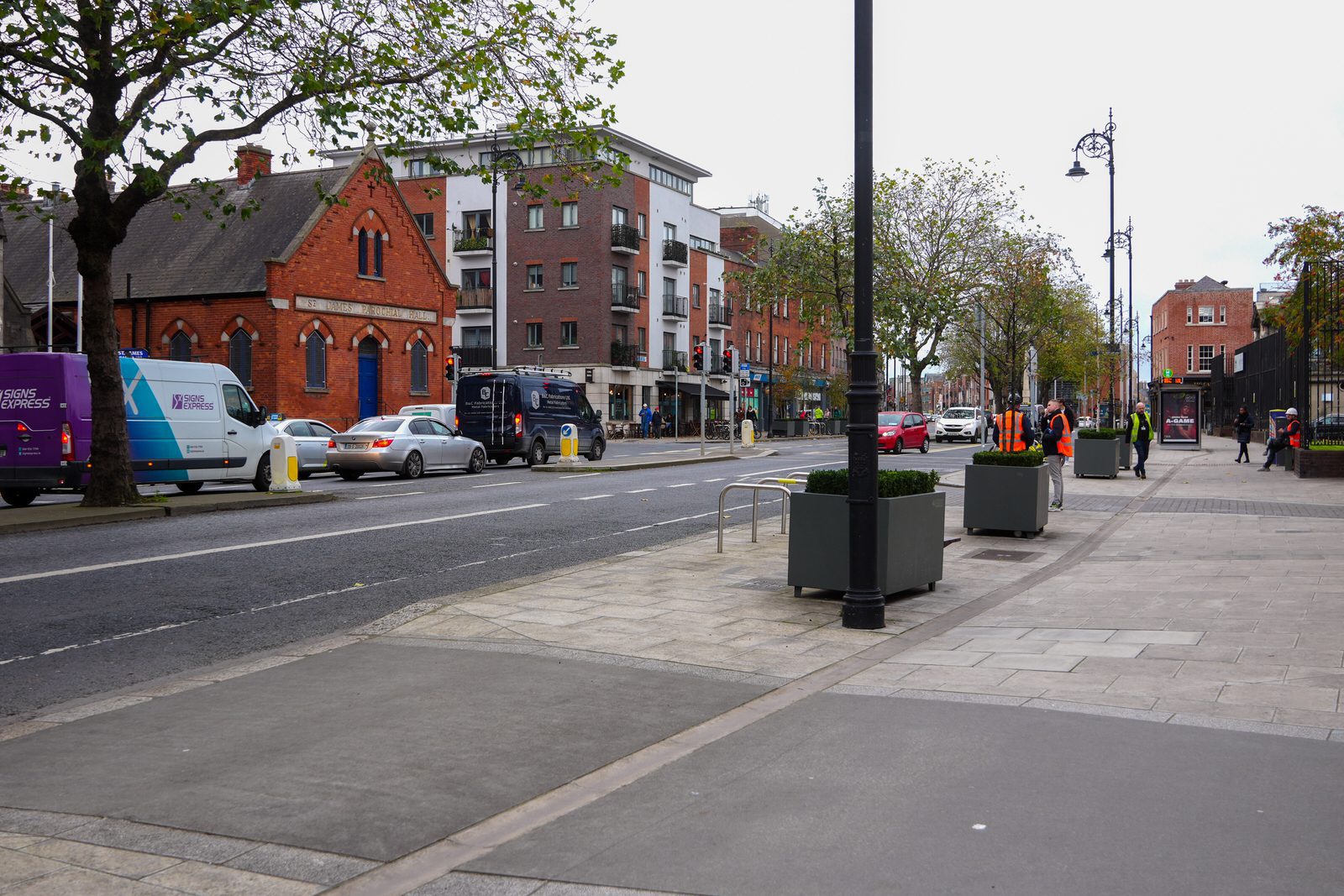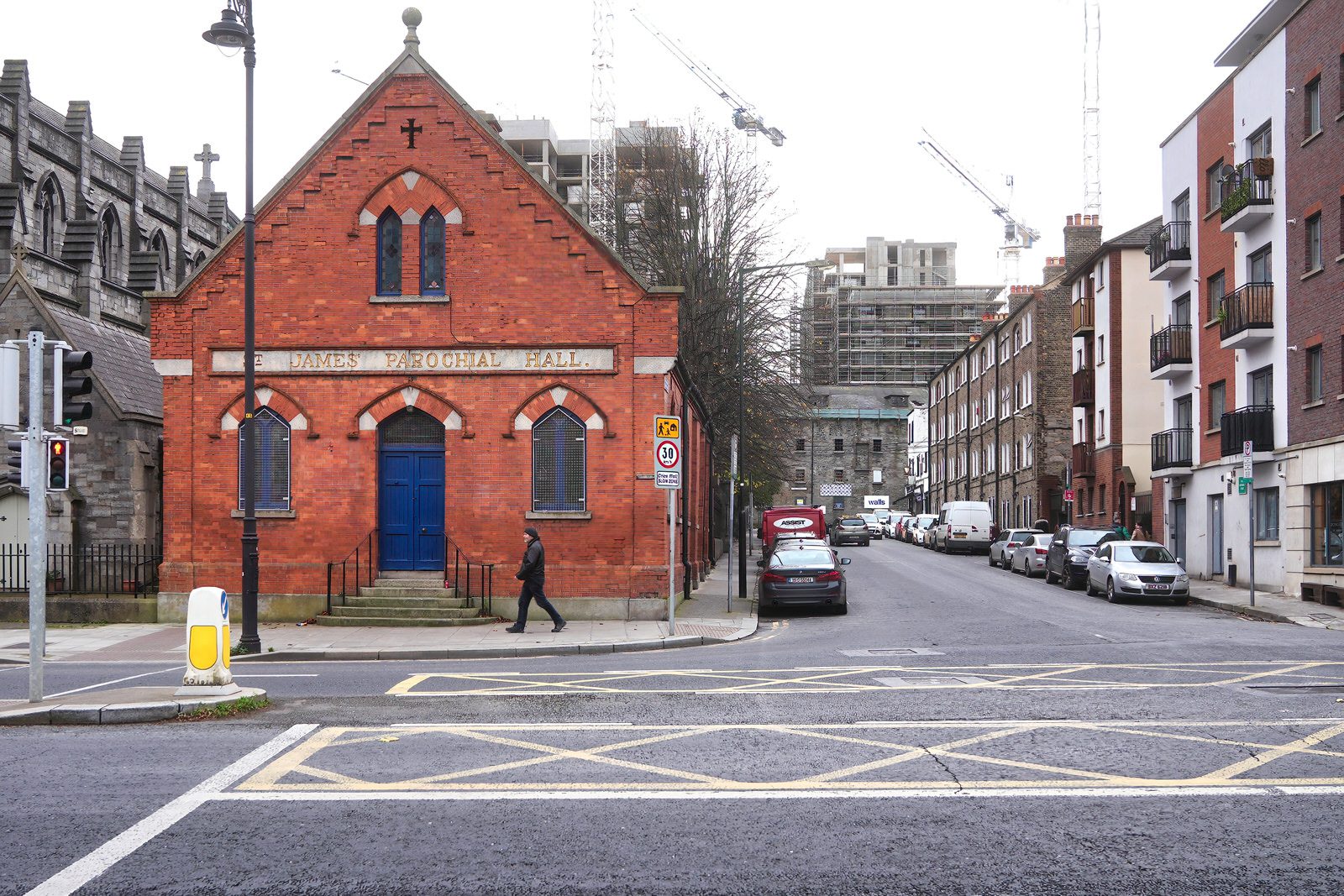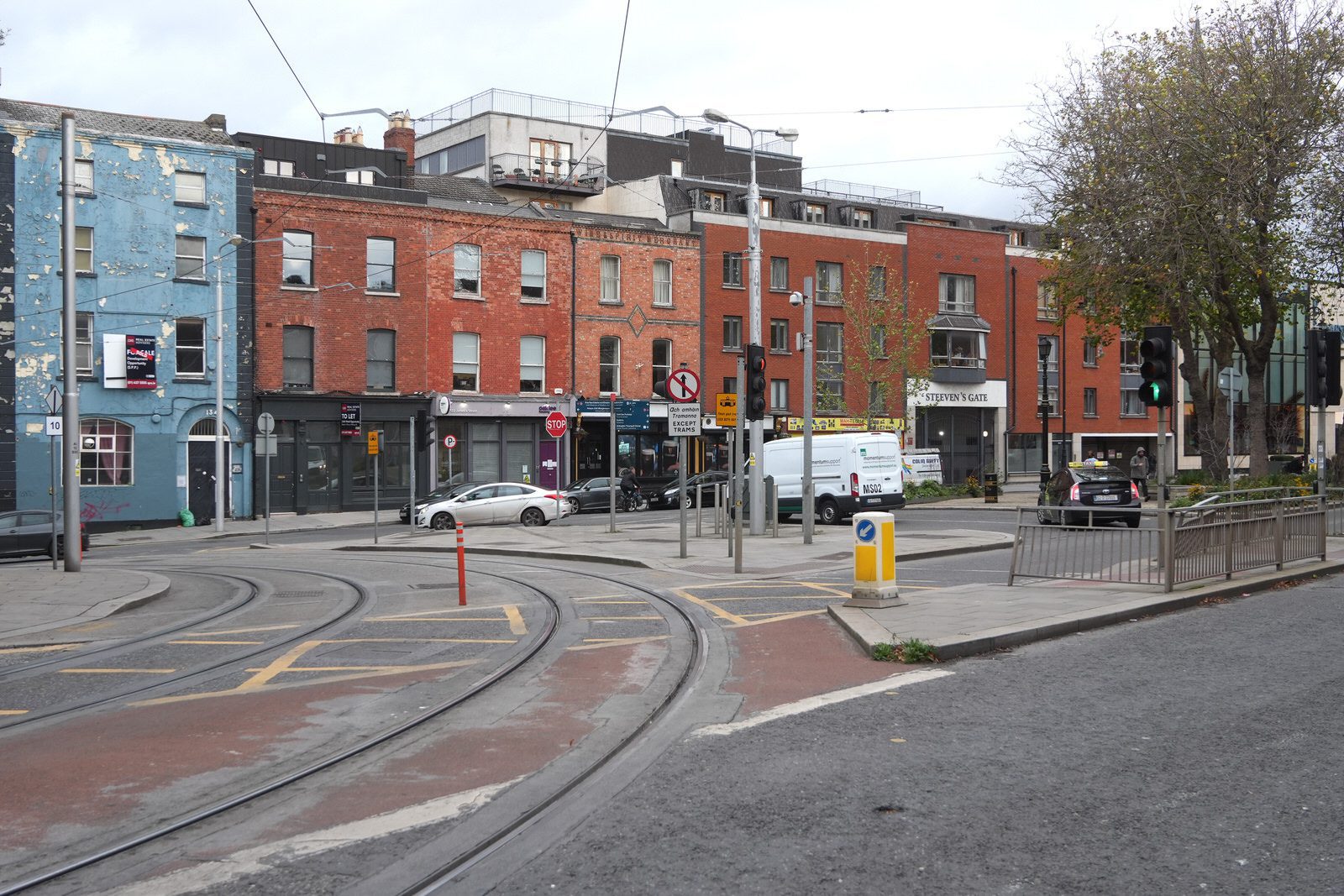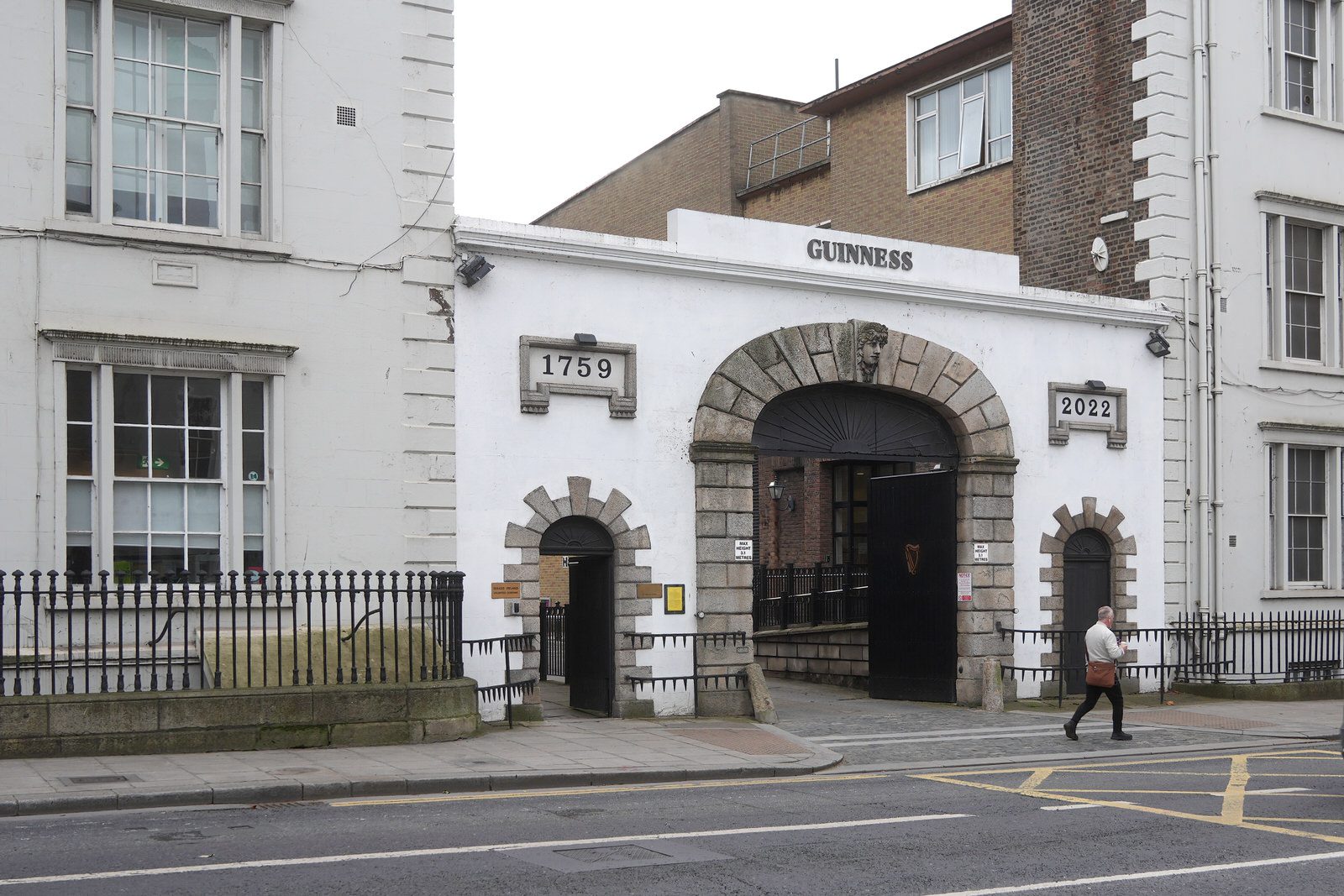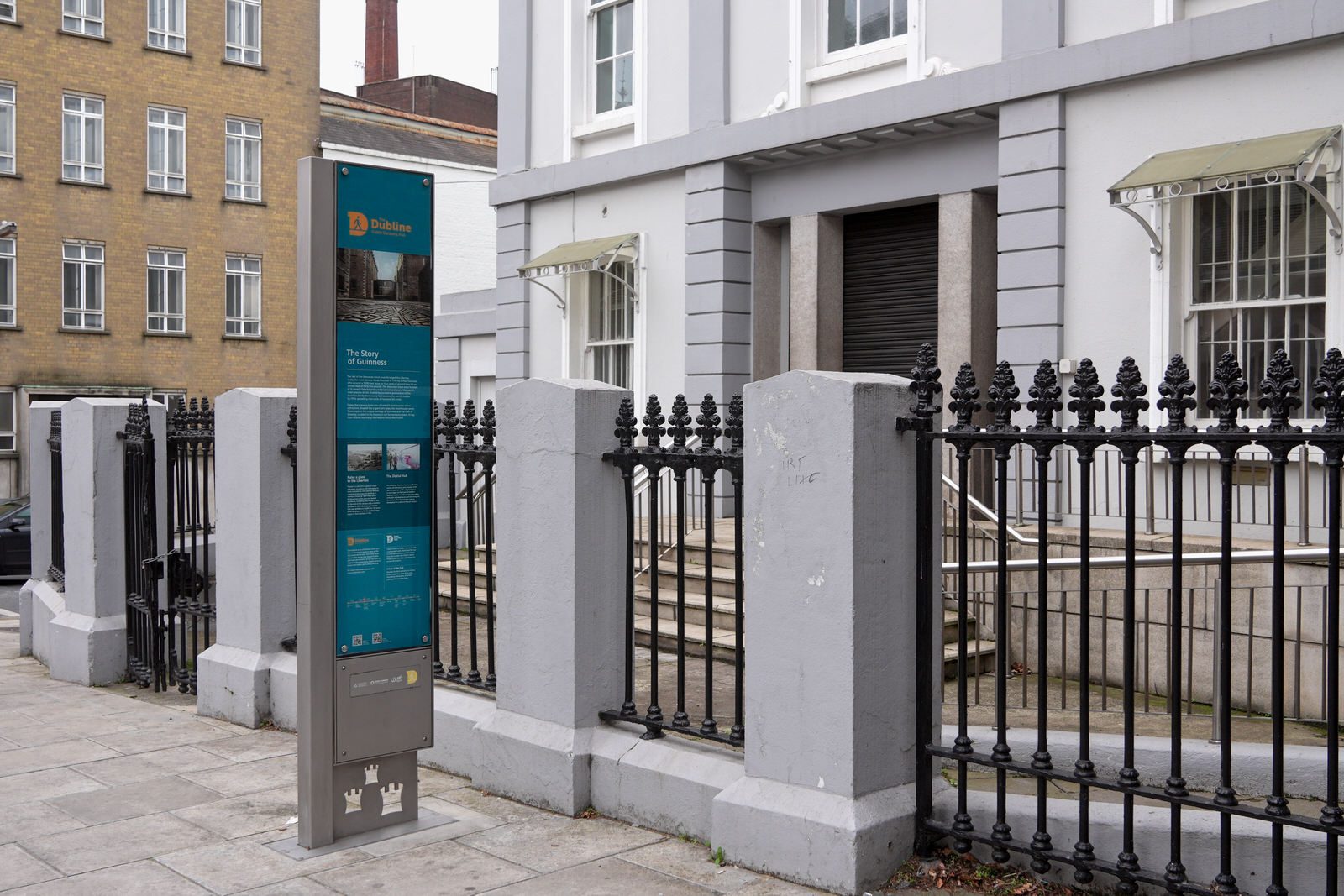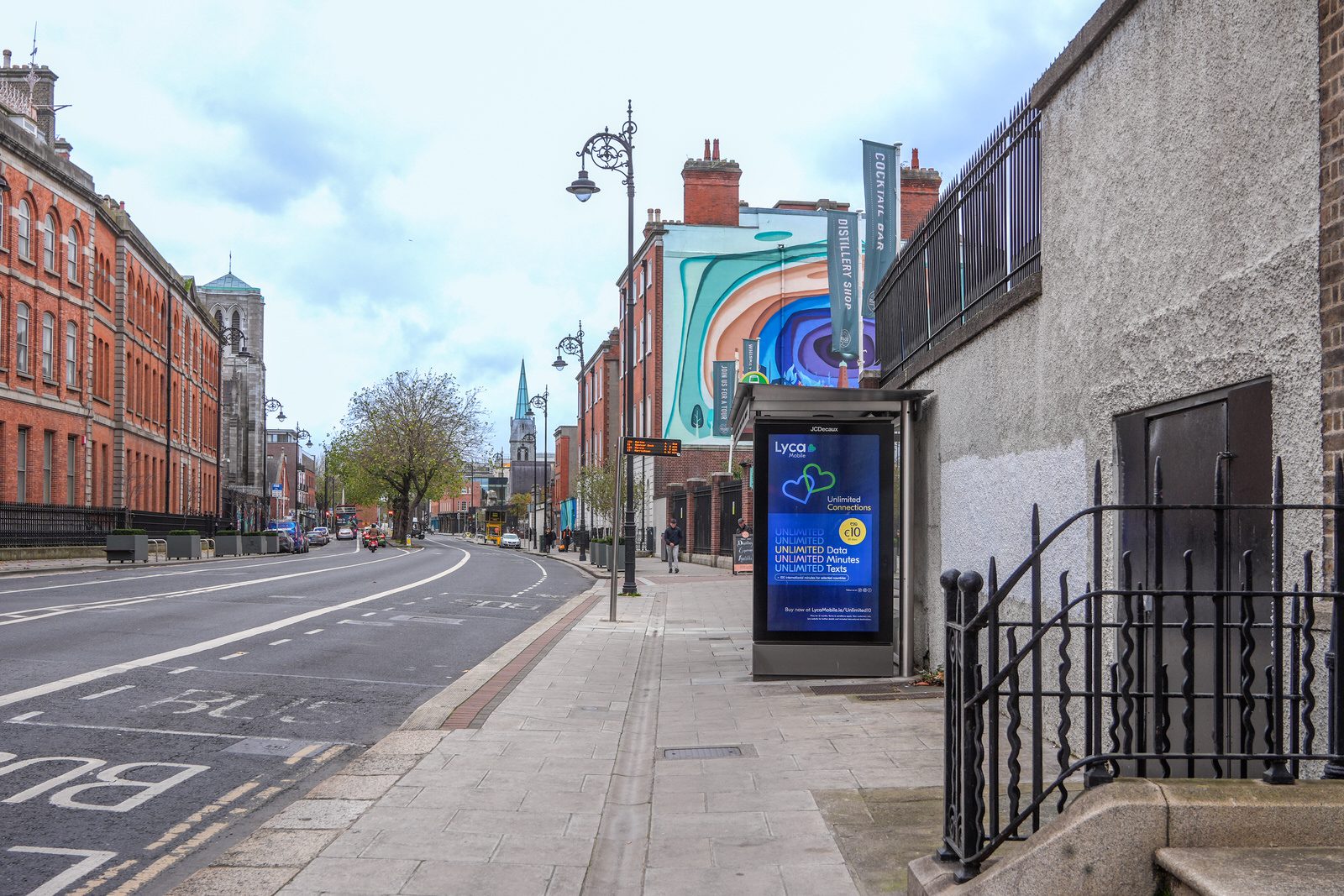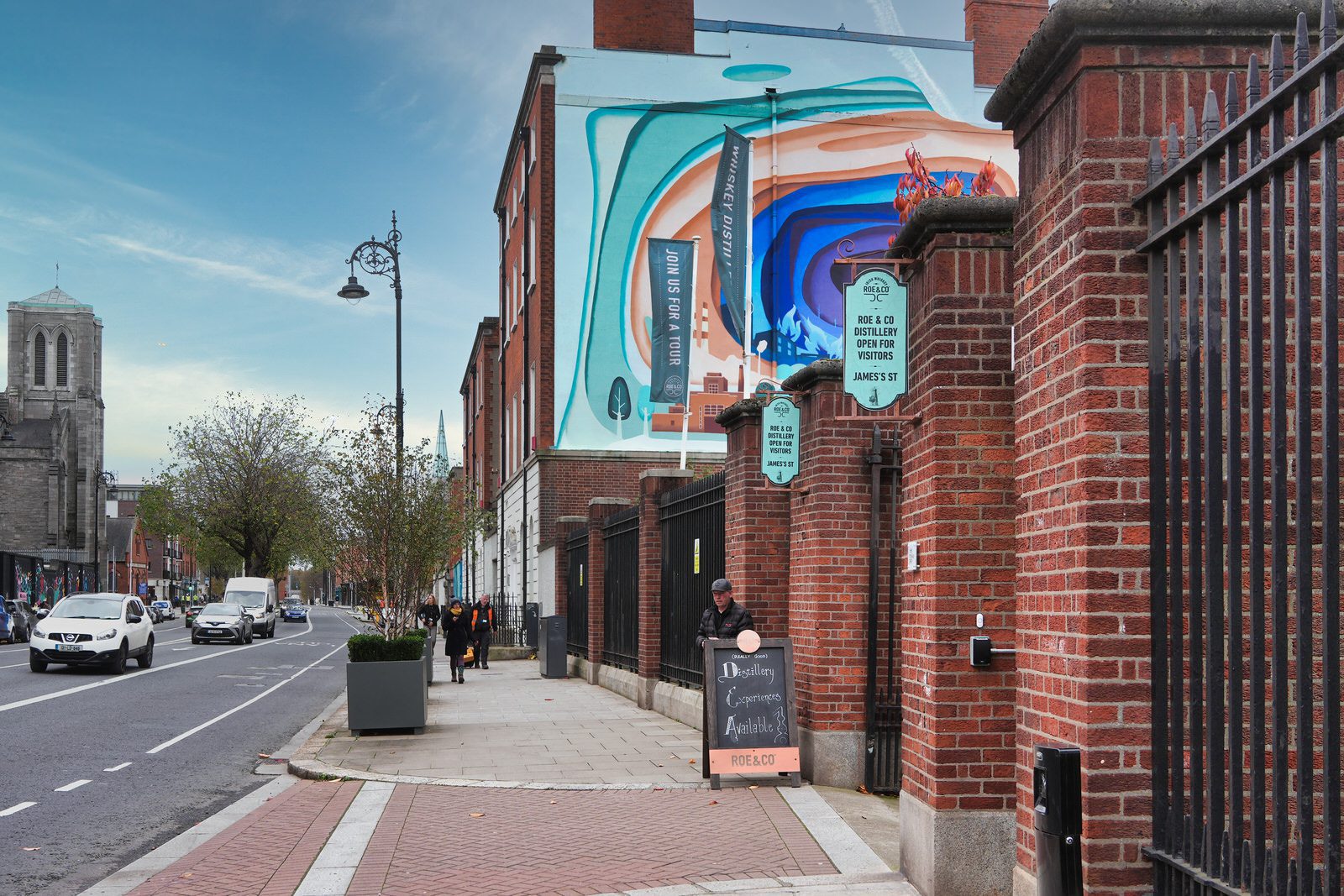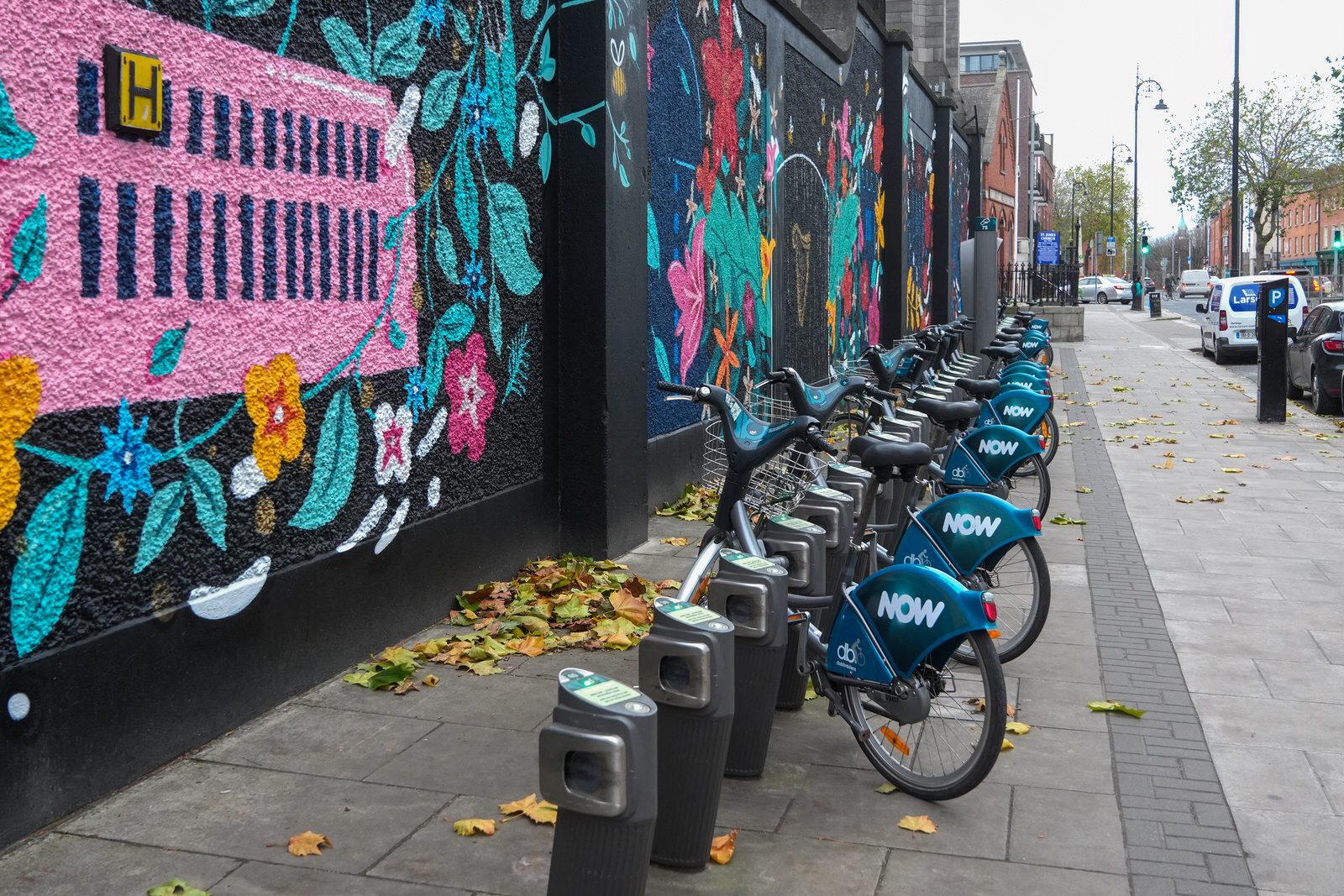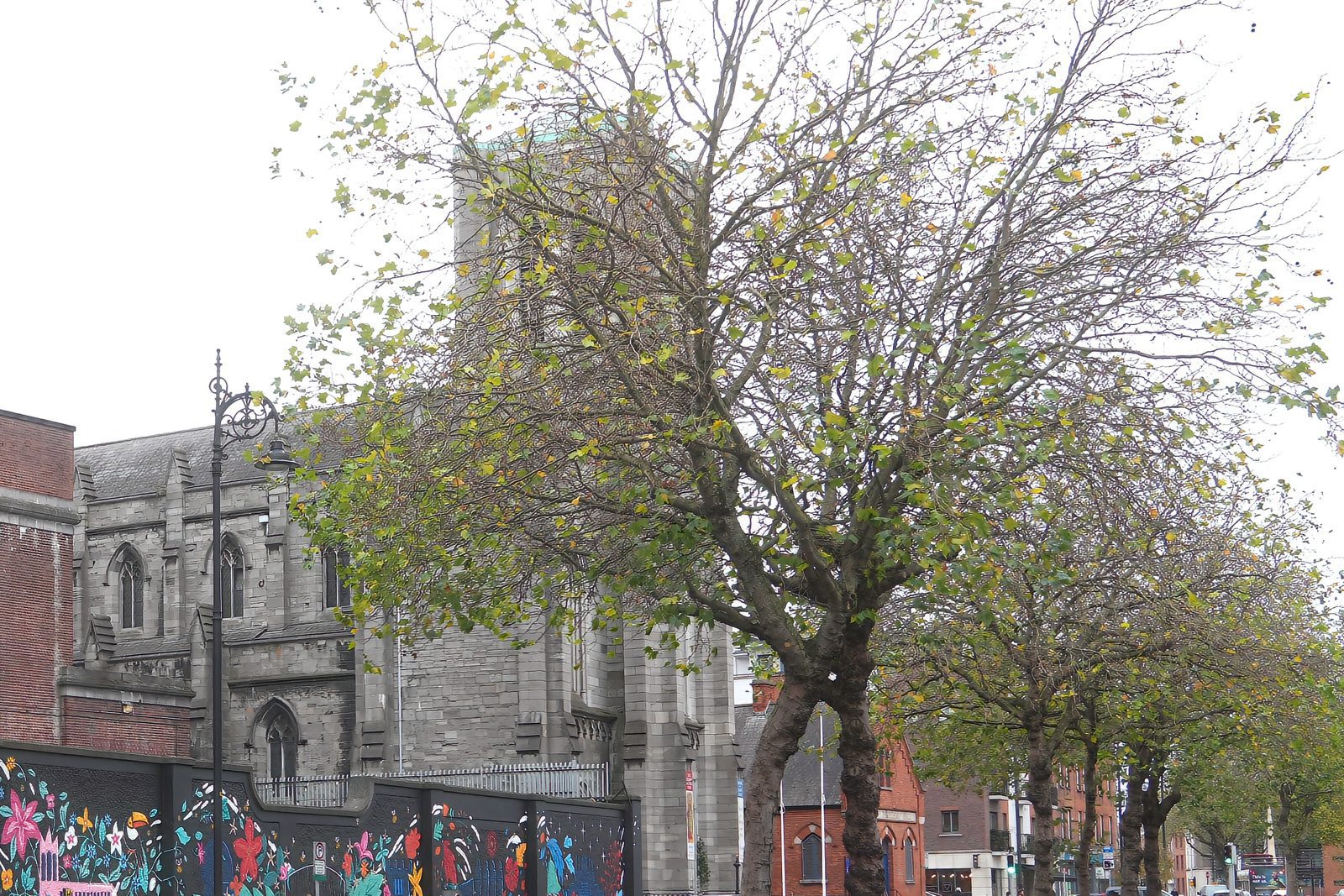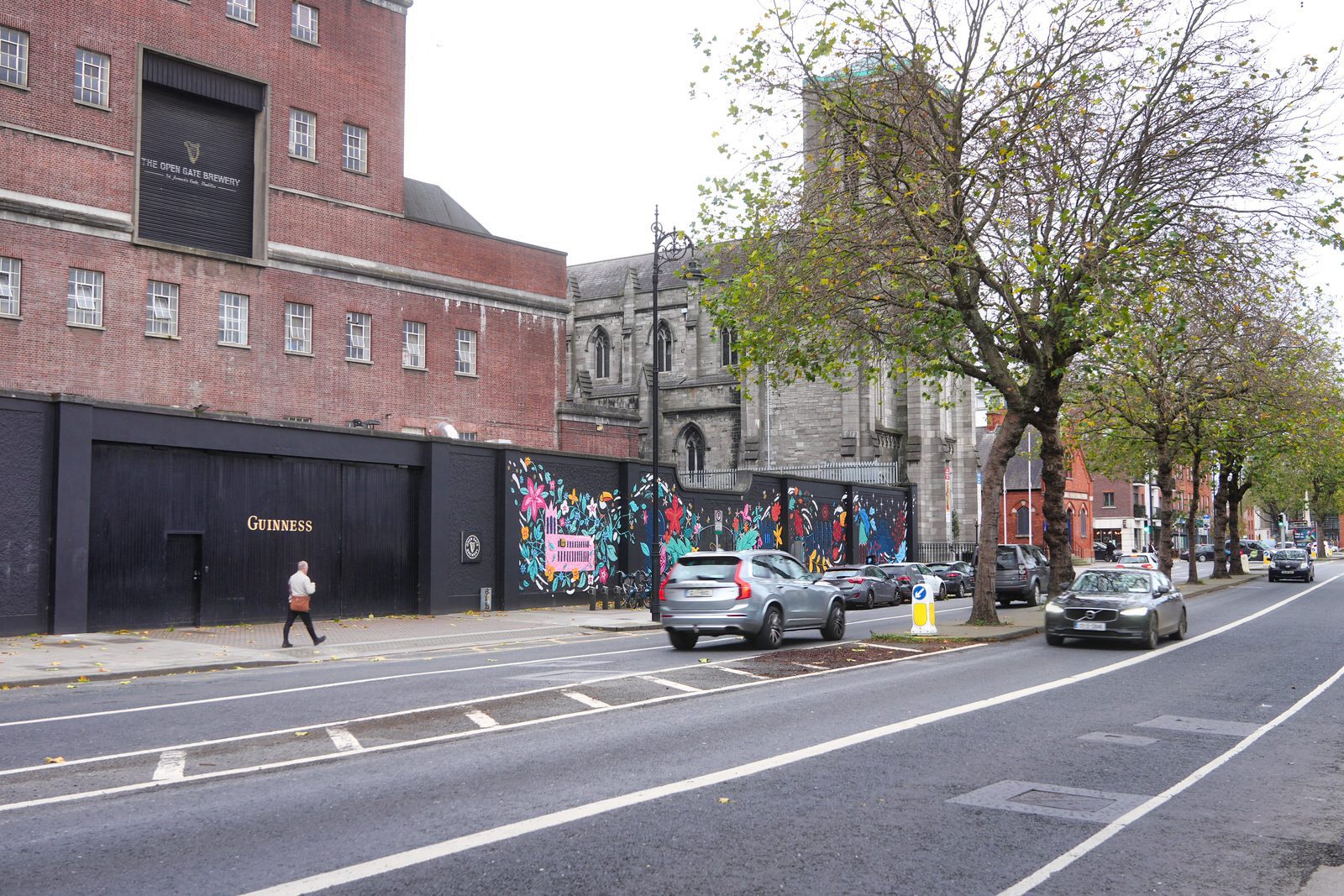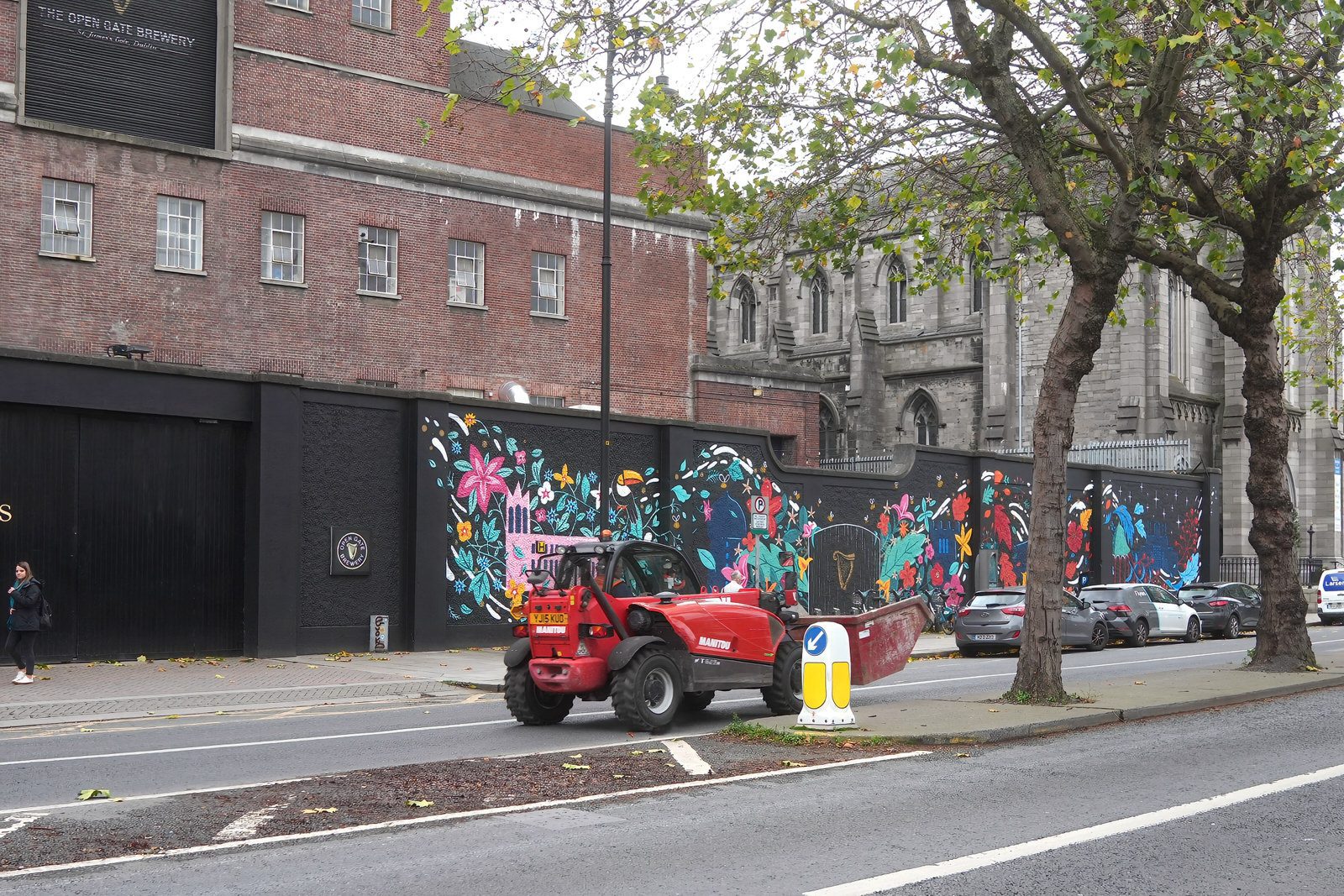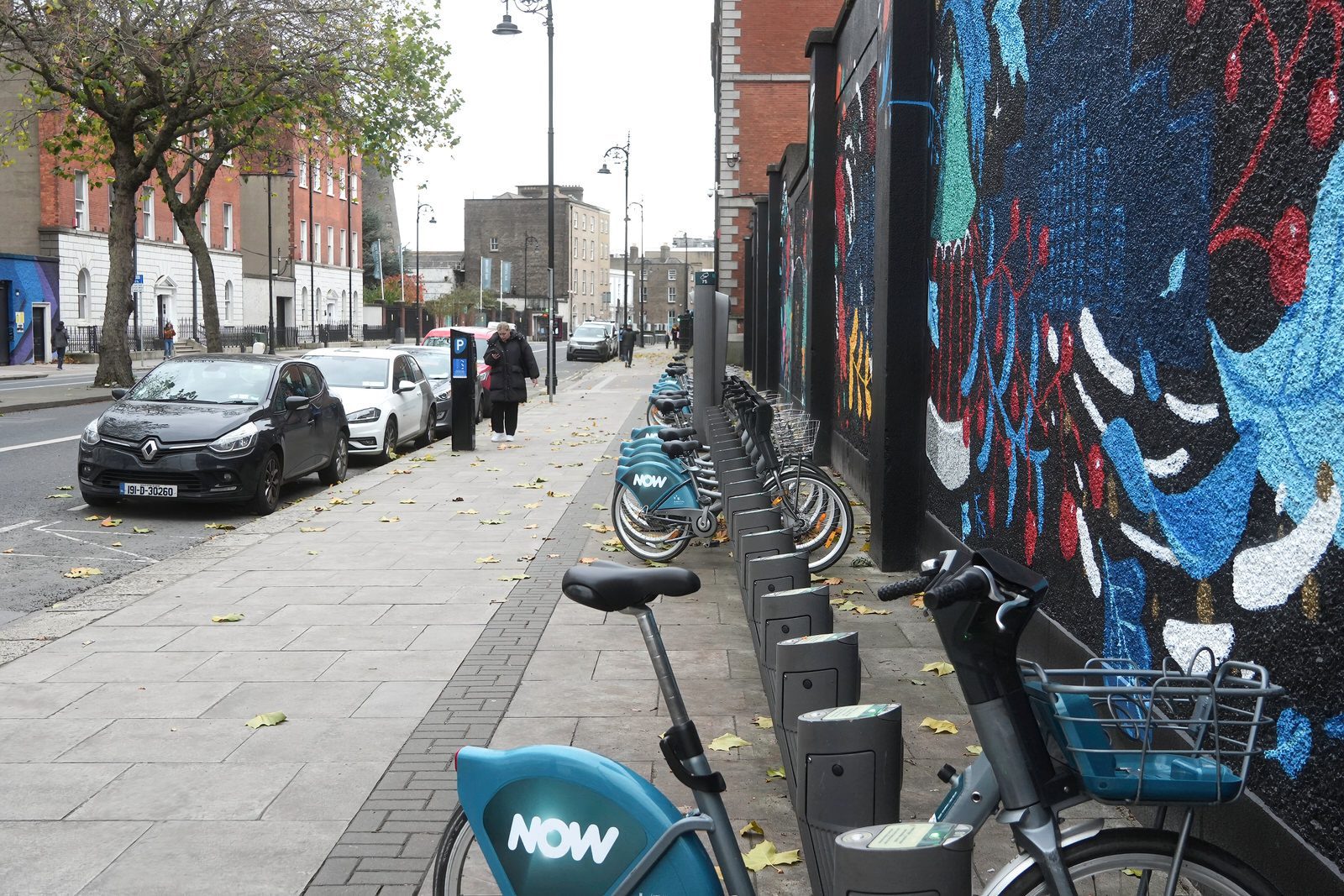PHOTOGRAPHED 10 NOVEMBER 2022
For such a significant and long-established thoroughfare, James’s Street as a street is not well documented in Dublin’s historical records which really surprised me.
The St James’s area has been associated with the brewing trade since the 17th century. A number of breweries had been established in Dublin up to the mid-17th century – one such brewery established by Alderman Giles Mee at St. James’s gate around 1670. Giles Mee was given a lease to the water rights at St James’s Gate (called “The Pipes”) by Dublin Corporation. These rights passed to his son-in-law, Sir Mark Rainsford, a city alderman who was Mayor of Dublin between 1700 and 1701. Rainsford leveraged these water rights and, according to deeds from 1693, was producing “beer and fine ales” from St. James’s Gate. There were also other brewers in and around St. James’s Gate (owing to the water supply available in the area), and Rainsford’s enterprise was not significantly different from the others. (Beer and ale were commodity products at the time as they were more commonly consumed than water – which contained contaminants that were removed in brewing.)
Sir Mark Rainsford died in 1709, and the lease passed to his son – also Mark Rainsford Esq. In 1715, the Rainsfords put the premises up for lease and it was taken by Captain Paul Espinasse. Espinasse reputedly had a role in the demolition of the original medieval gate – to ease access to the site and the city. Espinasse died in a fall from his horse near the Black Bull Inn at Drogheda in 1750.
For ten years the brewery site was on the market, and by 1759 the lease was in the hands of a third Mark Rainsford, the grandson of Sir Mark Rainsford. Arthur Guinness was interested in the premises, and on 31 December 1759, the lease was signed over to Guinness for 9,000 years at £45 per year.[ The site has been the location of the Guinness brewery ever since. Guinness has expanded well beyond the original 4-acre lot, and has consequently bought out the property, rendering the 9,000-year lease from 1759 redundant.
